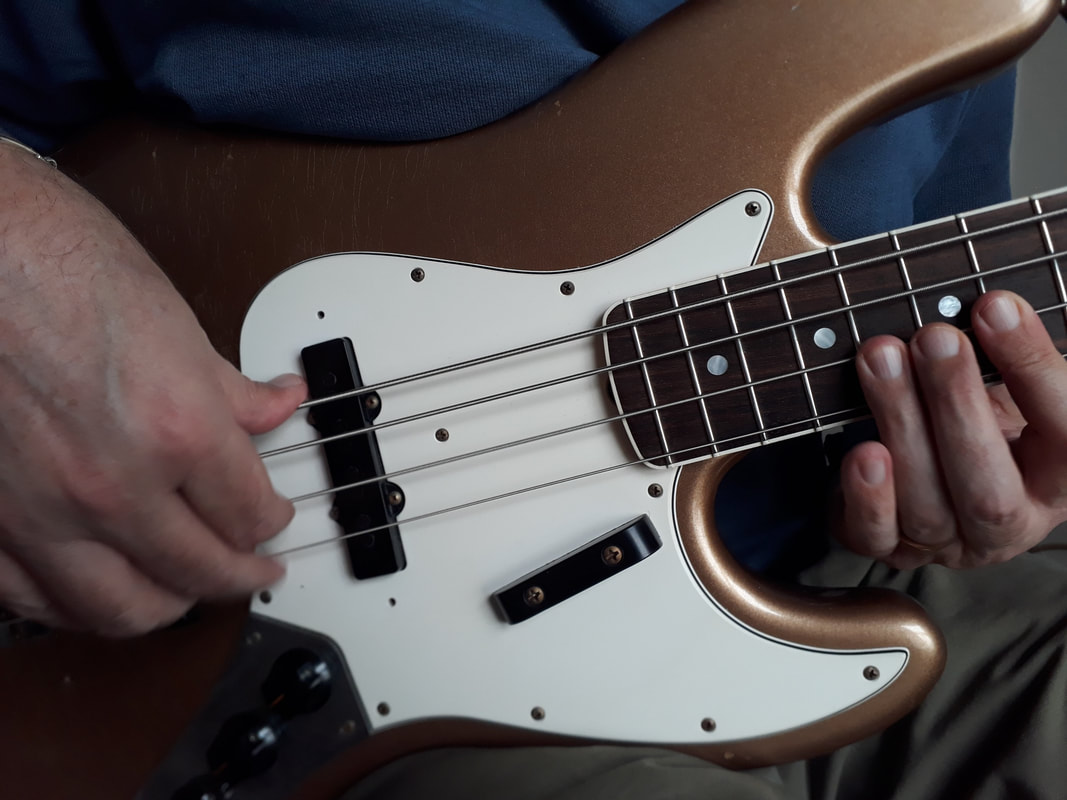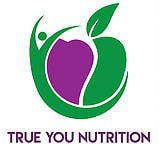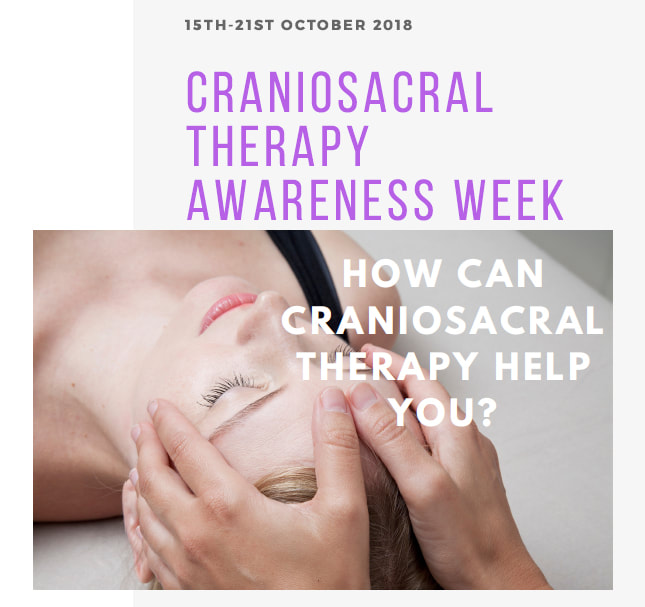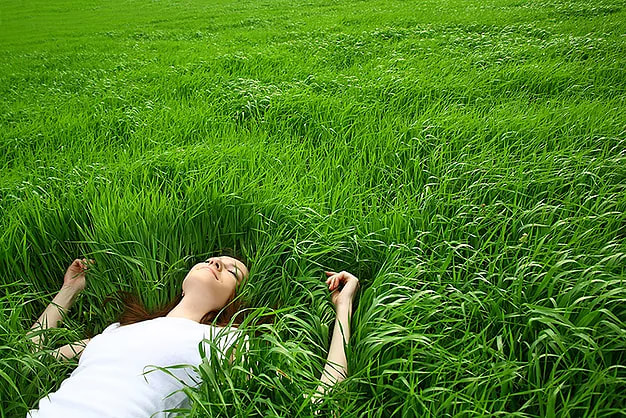|
The Government’s restrictions on our daily activities over the past year have been incredibly challenging for everyone. We had to learn how to live with the loss of our normal routine and had very limited interaction with other people. Suddenly most of our time was taken up with focusing on ways to stay healthy not only physically but mentally. If mental health was something we didn’t give much thought to before, being in lockdown will certainly have changed that. The life changes and uncertainty caused by the pandemic were perfect fuel for anxious thoughts, and many of us found ourselves looking for ways to give our mind a rest from over thinking. Mindfulness meditation is often suggested by mental health professionals as an effective way to help quieten a busy mind. It helps focus our attention and bring us fully into the present moment. Of course, when we are paying full attention to what is happening in the moment, it is impossible to be overthinking or worrying. I would recommend everyone give mindfulness a try, however it takes time, commitment and regular practice and I know it is not for everyone. So, what else can we do that will help keep us fully in the present moment so we can enjoy the benefits of peace of mind? The good news is that it needn’t be hard work and if you have a hobby or activity, you can fully immerse yourself in you may already be enjoying the benefits it brings to your mental health. The psychologist Mihaly Csikszentmihalyi was the first to recognise a state of mind he named ‘flow’. When we are in a ‘flow state’ we are so completely focused and totally absorbed by the task in hand that we are beyond distraction. Our senses are heightened, we lose track of time and there is a fluidity between our mind and body. Physical sensation such as hunger or tiredness fade into the background and most importantly mind chatter quietens. Csikszentmihalyi found rock climbers, surgeons and ballet dancers all enjoyed being in the ‘flow’ when they were doing their thing. You may have enjoyed being in a ‘flow’ state while taking part in activities, such as, sport, ballroom dancing, playing chess, drawing, painting, or playing a musical instrument. It appears when we are completely focused on doing something we love, ‘flow’ happens in a spontaneous and natural way. So, if you are unsure if you have ever experienced ‘flow’ but curious to have a go, here are a few pointers that will give you the best chance of enjoying that blissful state.
The great benefit of being in the ‘flow’ is that as well as keeping our mind focused on the job in hand, and therefore away from negative thoughts, it is very enjoyable and brings a great sense of satisfaction and wellbeing. I dare say we could all do with some of that!
0 Comments
‘Stress’ tends to manifest itself in two ways in the body. We either have too much energy running around our system and feel ‘hyper’; with tense muscles, churning stomach and the inability to focus; or we feel a deep lack of energy, fatigued, withdrawn, and a lack of motivation.
Does this sound familiar? When dealing with the challenges of the past year you may have felt your own energy swing from one of the above examples to the other. Here are some suggestions of activities that will help to bring you back into that middle ground and feel more in balance Exercise. Our body is able to create a huge surge of energy to get us away from anything we consider threatening. In our daily lives, anxious thoughts trigger this same response, and while this energy remains circulating in our body, it will be more difficult for our nervous system to be able to shift out of the stress response and into a state where we feel calm. One of the most effective ways to release this ‘excess’ energy is exercise. Any form of exercise will be beneficial, so do whatever is possible within your range of fitness and ability. If you have a health condition that means you are not able to exercise, or you don’t have the space at home, then TRE or Tension Releasing Exercise is an effective alternative. A technique created by Dr David Berceli, who first used it to help heal traumatised communities in countries affected by violence and war, it is a technique that is now taught in classes and on a one-to-one basis. Online teaching may now also be on offer. Breathing. There is a strong connection between the body, mind and breath. Learning to breathe well is one of the most powerful ways of revitalising your mind, body and emotions, and when practised regularly the benefits of breathing exercises are far reaching. They help rid the body of waste products, increase a sense of vitality, and calm the mind and emotions during stressful times. If you are interested in trying this for yourself ‘The Power of Breath’ by Swami Saradananda is an easy to follow and inspiring book with many different breathing exercises. Conscious use of the breath is practised in hatha yoga which is an excellent way to deepen your connection to your body and another way to build good breathing habits. For local yoga classes in person and online I highly recommend Yoga Crow. The Vagus The vagus nerve is part of our parasympathetic nervous system and a great regulator of our body. It helps shift our body out of ‘fight or flight’ and into a calm balanced state. We are not able to consciously control the vagus but there are many activities that influence it indirectly. Breathing exercises mentioned above are one way and here are some more simple ones you can try;
Gut Microbiome Our digestive system has around 100 million neurons, which is why it is sometimes known as our ‘second brain’. Our gut does a lot more than just digest our food, it supports our immune system, reduces inflammation in the body and most relevant here, influences our mood and how anxious we feel. It does this by working very closely with our brain and our gut bacteria or gut microbiota. Our gut and the bacteria in it are able to produce natural mood regulating substances such a serotonin and dopamine. As you can see, having a healthy and diverse microbiome supports our overall health so if you are interested in learning more about the gut microbiome, Viola Sampson is a reliable source of information on this topic. Full Body Presence If you are lacking in energy, feel empty, or physically numb; or if you are recovering from an illness and have post viral fatigue; it can be difficult to find the energy and motivation to do anything at all. If this is how you are feeling right now then guided visualisations and meditations can be helpful, as they only require you to listen and can be done sitting or lying down. Suzanne Scurlock Durana a craniosacral therapist based in the USA has created her own visualisation called ‘Full Body Presence’ that will help you feel more energised and connected to your body. This audio is not free but you can hear a similar shorter version on Suzanne’s website for a taster. If you have a history of trauma, please be cautious when doing exercises that focus on body sensation. Remember you are in complete control throughout and can stop the audio at any time. You may find it helps to lighten your focus if you are struggling but do not continue if you feel at all uncomfortable. I think we will all agree that being told to stay indoors during ‘lockdown’ was something everyone found challenging. There has been a alot of research into how our bodies respond to being in nature. Intuitively we feel good when we are in a natural environment and we now have scientific evidence that shows being in a natural environment has a positive effect on our wellbeing.
If you live in West Essex where we have Epping Forest on our doorstep you may already enjoy a walk in the woods, however if you need encouragement to leave your comfy sofa keep reading as I have some facts that may convince you. The Japanese, many of whom live in densely populated cities, have recognised the health benefits of being ‘in nature’ and taken this a step further by creating Shinrin-yoku or ‘forest bathing'. This term was first used in 1982 by the director of the Japanese Forestry Agency and refers to immersing oneself in a forest and connecting deeply to the environment through our senses. It is a very pleasurable exercise in immersing yourself in your sensory experience of the forest by paying close attention to the sights, sounds and smells of your natural surroundings. Forest bathing does not involve strenuous activity so is accessible to anyone regardless of how fit they are. In fact it is best done slowly as the idea is to notice everything around you, both large and small. For example, the quality of light, the different types of plants and insects or wild animals, all of which might be missed if you are walking speedily by. It has been proven so effective at stress reduction that major corporations based in Tokyo regularly send their staff on Shinrin-yoku holidays. Dr Yoshifumi Miyazaki pioneered studies over many years on the effect of forest bathing on the body and summarises the key results in a book he has written on the subject. The studies found that after two hours of ‘forest bathing’, cortisol, one of the hormones produced profusely when we are under stress, was reduced by 15.8%, pulse rate slowed by 3.9%, blood pressure dropped by 2.1% and parasympathetic nerve activity (the part of our nervous system that is more fully engaged when we feel calm) went up by 102%. (Miyazaki Y 2018). Of course, what cannot be measured is the pleasure and enjoyment we get from feeling so connected to our natural surroundings. So why not try a little forest bathing yourself this season? Autumn is the time the forest puts on a huge show and the perfect chance for us to appreciate the beauty and wonder of the natural world. Learn more about forest bathing As you know I practice craniosacral therapy. One of the reasons people seek out craniosacral therapy is for help with managing stress and anxiety. We need a little stress to thrive but if the load is too great it can have a negative effect on the way our body functions. We may not always be aware of it but when we are under stress our inner landscape changes from being balanced into a state of high alert. It is natural to feel a little anxious from time to time, but anxiety is a state of constant worrying and an excessive and persistent state of apprehension. There are many factors that contribute to anxiety, mostly centred around our unique personal history. However, stress creates the perfect environment in our bodies to generate anxious thoughts. When we are under stress the sympathetic part of our nervous system becomes activated and our bodies produce a combination of hormones and neurotransmitters, which all keep the body on the look-out for danger. It is impossible not to feel anxious if we sense an impending threat. It then follows that if we lower our stress levels we will be giving ourselves the best chance to feel less anxious. Our stress response is in fact the incredible capacity of our body to get us out of a dangerous situation. It is programmed into us for our survival. You may have heard it called the fight or flight response. In human beings something as simple as being late for an important meeting can trigger our stress response. For the majority of us the things that trigger our fight or flight response in our daily lives are not life threatening at all. It is important to recognise how far along the fight or flight path we are, as once we have a sense of this we can seek to address it if needs be. However, this is not always a simple as it sounds. We only know what feels normal for us, so how do we know what a ‘balanced’ nervous system feels like? This is where having awareness of body sensation or interoception is invaluable. Interoception is the perception of the internal state of our bodies. For example, as you are sitting here how does your throat feel, or your chest or gut? This gives a true picture of how we are. What is a panic attack? A panic attack is a sudden episode of intense fear that triggers severe physical reactions when there is no real danger or apparent cause. You may experience your first panic attack during a period of chronic stress, after an accident, surgery, illness, trauma or emotionally overwhelming event. What does it feel like to have a panic attack? Panic attacks last on average from 5 to 20 minutes but can last longer. Anyone who has ever experienced a panic attack will tell you that they are extremely unpleasant. There is an overwhelming feeling something terrible is about to happen, sometimes with an urgent need to get away from wherever you happen to be. Please note do not self-diagnose, I recommend you check with your GP if you are experiencing symptoms you are concerned about. Physical sensations of a panic attack may include: Heart beating very hard and fast Feeling nausea or wanting to vomit Dry mouth Chills or hot sweat Sweaty palms Feeling like you are going to faint Tightness in the throat Shortness of breath Dizziness or light headedness Sense of unreality or detachment A feeling that something terrible is going to happen This is a link to a short You Tube film from Mind with a group of people discussing their own experience of panic attacks. What happens during a panic attack? Knowing what is going on in your body during a panic attack might help you understand some of the sensations you experience which can be intense and frightening; Heart beating fast – pumping blood to big muscle groups to help you run fast. Feeling or being sick – if you have a full stomach you cannot run as fast. Shortness of breath, – adrenaline increases breathing rate to prepare for action. Dry mouth – the digestive system shuts down as it is non-essential in a crisis, salivating is the first part of the digestive process. Feeling faint/dizziness/light headedness/sense of unreality – if we are in a situation where we feel seriously under threat, we ‘space out’ or dissociate. Preventing a panic attack In the long-term, stress reduction is vital. This should take into account all aspects of your life and there is a lot of information available about how we can do this. However, there are some targeted stress reduction techniques which are very effective. For example, breathing exercises which are able to directly access the parasympathetic nervous system and take us out of a fight or flight state. Hatha yoga, and the Mindfulness Based Stress Reduction Programme created by Jon Kabat Zinn. All of these incorporate ‘interception’ mentioned earlier. Try to avoid highs and lows and maintain balance in the body by cutting down or eliminating caffeine and alcohol. Eat regularly and avoid excess sugar to keep blood sugar levels even. If you know your panic attacks are generated by anxiety or events in your life, Cognitive Behavioural Therapy also known as CBT or counselling may helpful. During a panic attack Here are a few simple suggestions that you can try during a panic attack. We suffer less stress if we feel we have some control over our situation. Knowing you can do a few simple things that help, might take away the dread of having an attack and even lessen them. Become aware of your needs, wear comfortable clothes which are not too tight and allow you to breath. If you start to feel hot take off your coat, if you need fresh air move nearer to a window. Commuting on packed tube trains I have learned that standing in the aisle gives you more space and air but there is a cooling draft as the train moves if you are squashed against the door! Remember to remind yourself the panic attack will last a short time and you will feel ‘normal’ again soon. When you feel those familiar sensations that tell you, you are starting to feel panicky, try to ‘ride the wave’ rather than control the sensations. Trying to control tends to further escalate the attack. If you can try to be a ‘witness’ to what you are experiencing, notice the body sensations rather than reacting with negative internal monologue which will escalate the feelings of panic. Mentally reassure yourself ‘I sense danger/a threat but when I look around me, I see nothing dangerous – I feel safe.’ It is ironic that when we are in an activated state, we are less able to discern what might be a threat but obviously don’t lie to yourself here! If you are in a dangerous situation you don’t need to calm down, you need to get ready to run. If you are with a friend or someone you trust ask them to reassure you, look at their face and ask them to tell you everything will be okay. This is an automatic and human response for most people, but research has shown the importance of social interaction between human beings in regulating their parasympathetic nervous system. You can try ‘shuttling’. Find a part of your body that feels okay, feet are always a good place to start. Really try to feel all the sensations in your feet – the fabric of your socks, if your shoes are tight and their contact with the floor. Do this for a minute or so, take in all the sensations as best as you can, then give yourself a break for a few minutes, if the unpleasant sensations come rushing in try to stay with them for a minute then change your focus back to your feet. Keep repeating this shuttling back and forth. This may allow you to remain in a situation you can’t get out of until the attack passes. When we are panicking our breathing speeds up, if you are able to slow your breathing down even a little it will help you get back to feeling okay. It also gives you something to focus on. I really like this animation app for breathing during a panic attack. Looking at the image of a face rather than counting adds to the therapeutic effect. I hope you have found this helpful. https://www.mind.org.uk/information-support/types-of-mental-health-problems/anxiety-and-panic-attacks/panic-attacks/ Winter can be a beautiful season: frost sparkling on twigs and branches and even those of us who dread getting out and about in it have to admit there is nothing quite as magical as freshly fallen snow. But it is a time of year when we are more likely to pick up colds, viruses and flu. So, what can we do to give ourselves the best chance to avoid picking up infections so common at this time of year? I am guessing you probably do most of these already but sometimes a timely reminder can be helpful. Eight ways to stay well in winter…
1 At the risk of sounding obvious (or like your mother!) washing hands thoroughly and regularly is one of the best ways of preventing infection. Remember to wash your hands after visiting places with a high volume of people passing through like the supermarket or public transport. When you are out and about try to avoid touching your face, rubbing eyes and especially biting nails as any bacteria on them will be transferred to your skin or mouth. Mobile phones, keyboards and iPads should also be cleaned regularly. Just think where you take them! 2 Our body’s immune response fights off infection. Like many bodily functions that go on without us being aware of them it is complex and impressive. To function optimally our immune system needs vitamins and minerals, particularly vitamin E, B6, folic acid and zinc. A healthy diet should provide you with all of these, or if you feel you might be low on some vitamins you might choose to take a multi nutrient supplement. Getting the balance of vitamins and minerals correct is important and it is worth consulting a nutritionist or dietician who can give you professional advice tailored to your specific needs. 3 Stress raises our cortisol levels and high cortisol levels supress the immune system. Use all your own favourite (healthy!) ways to unwind and try to include exercise out of doors. This need not be strenuous but is particularly beneficial if taken in nature, the park, woods or by the sea. 4 We are constantly being told about the next new ‘superfood’, but as with everything in life balance is key. Raw garlic has been known for centuries as an effective killer of bacteria and viruses. Mushrooms, particularly Shitake mushrooms, have immune boosting properties. These ingredients can be found in most supermarkets and can be easily incorporated into the diet. 5 There are many essential oils such as Thyme, Eucalyptus, Ravensara and Pine that are helpful against respiratory infections.The essential oils we extract from plants are full of active chemical compounds that the plants themselves use as a defence against bacteria and viruses. If you feel like you are coming down with a cold try using a pre-mixed blend of essential oils such as Micheline Arcier’s ‘Vigeur’ in the bath or two drops of essential oil in a carrier oil such as sunflower seed oil applied to the upper chest area. It may be enough to prevent the illness from taking hold. A few drops in a bath is also a great way of warming you up if have been outdoors and become very cold. 6 Soluble fibre in the diet has been shown to boost production of a protein called interleukin-4, that stimulates the body’s infection fighting T cells. It also has an anti-inflammatory action so may help achy winter joints. Some sources of soluble fibre include oats, carrots, strawberries, blueberries, apples, nuts, seeds, lentils, barley and citrus fruits. Whoever coined the phrase “An apple a day keeps the doctor away” clearly knew what they were talking about! 7 Negative thoughts supress the immune system so If you tend to feel a bit ‘low’ during the winter months try to include gentle exercise outdoors once a day to get your daily dose of natural light. Whether it is meeting friends for a coffee, watching a film, reading a book or meditating, discover what works best to keep you positive and make sure you are getting enough Omega 3 in your diet. 8 Our microbiome or microbiota is the trillions of microbes that live on and in us and is as unique to us as our fingerprint. This is a fascinating topic that I cannot possibly cover in a few lines but the reason I mention it here is that scientists are discovering more and more about how it contributes our health. Our gut microbiome greatly influences our immune system. It appears a healthy digestive system is the foundation to our overall health. So, look after your digestive system and you might find it will keep you well all winter. I love the summer but find that with the lighter mornings I wake up much earlier. Lack of sleep is something we have all experienced at one time or another so this got me thinking about what might be keeping us awake.
I should say before I start, that this is a huge topic and I could have expanded on many of the aspects covered. My hope is that if anything here interests you, you can explore it further. When you think about it sleeping is a strange thing, we get into our pyjamas and spend six or seven hours unconscious before waking up to a new day. Researchers are not entirely sure why we sleep but they do know it is vital to our survival. Amongst other activities, during sleep cycles we transfer memories from short-term to long-term, learn to associate words and it is a time of peak growth hormone, when cell reproduction and repair is carried out. What we all know from experience is that if we have had a good night’s sleep we feel great and if we have had a poor night’s sleep we feel awful. Lack of sleep impairs our ability to regulate our emotions and we lose our neutrality. Cue drama! So babies and young children apart, what might be preventing us from sleeping well? Some things to consider; Comfort– It may sound obvious but is your bed comfortable?! Temperature– A cool well-ventilated room is ideal. Sleep occurs when the core temperature of the body is dropping and when temperature change and heat loss is at its maximum. This is why our body cooling down after having a warm bath can make us feel sleepy. Light– Melatonin is a hormone made by our pineal gland. When it is dark after sunset, usually around 9pm, the pineal gland begins to actively produce melatonin. This is released into our blood and as the melatonin level rises we begin to feel less alert and more sleepy. Melatonin levels in the blood stay elevated for around 12 hours and then fall back to daytime levels, which are very low by 9am. Bright light inhibits the release of melatonin so even after 9pm being in a brightly lit room may be enough to prevent the release of melatonin. This is also true of the light that comes from phones, laptops and electronic reading devices. Physical exercise– Research has shown that exercise improves the quality of sleep. We appear to enjoy a more sound and restful sleep after taking moderate aerobic exercise during the day. The amount and type of exercise will vary depending on our age and level of fitness but as a rough guide 30 minutes of moderate aerobic exercise should be enough to make a difference. Vigorous exercise during the evening may be too stimulating for some people and even prevent sleep, so it is really a question of trial and error and listening to your body to see what works best for you. Blood sugar– If our blood sugar drops too low, we may wake up during the night. The cells in our body require sugar to function properly and when this falls too low feelings of restlessness and anxiousness will result. Obviously it is not a good idea to eat a heavy meal too soon before sleeping but snacks that keep blood sugar levels steady can be helpful. Food types with a low glycaemic index such as oatmeal and whole grains will help maintain steady blood sugar. Ideally a daily diet containing complex carbohydrates will keep blood sugar levels even throughout the day and into the night. Hormones– For females the balance of hormones oestrogen and progesterone influence sleep. It appears that a drop in progesterone or an abrupt change in the balance between the two hormones can cause sleeplessness. This is true for women of all ages. As hormonal balance fluctuates on a daily basis this may pass but if not we may choose to influence what is happening by using synthetic hormones or natural alternatives. The Mind– Our beautiful busy, busy minds; both a blessing and curse! If we are worried or anxious we will find it difficult to sleep. What is occupying our thoughts may be serious or trivial but either way our preoccupation with them is preventing us from sleeping. So how can we find ways to switch off that constant chatter that is keeping us awake? Reading– This is pure escapism. It helps us switch off, takes us to another place and keeps our mind busy by giving it a job to do. You might like to know that studies have shown that brain activity during sleep is better regulated after reading a book compared with a screen. Just passing on the information! Visualisation– Harnessing the power of your imagination. This is a proven technique that is now used in sports psychology to train athletes and sportsmen to improve their performance. It works because our brains show the same activity whether we are visualising lying in our hammock on the beach or actually physically there. As our bodies respond to our brain activity, imagining yourself in the happy place of your choice will help your body relax. Progressive muscle relaxation or body scan– A slow and thorough journey around your body starting from the feet, tensing then relaxing all the muscles one by one. This helps reduce muscle tension. A certain amount of muscle tone is normal but excess muscle tension creates a feeling of alertness. Our bodies interpret the tension in our muscles to mean there is a threat nearby and we need to be vigilant, so our system is not allowed to relax enough to drop into sleep mode while the threat is present. Doing a body scan helps our muscles, body and mind relax which is much more conducive to falling asleep. Breathing– Breathing, like muscle tension, is inextricably linked to our nervous system. By consciously affecting our breath we can affect how our bodies feel and calm an activated nervous system. There are many types of breathing exercises, Pranayama or breath control used in Hatha yoga is one form. There are many pranayama breathing ‘exercises’ that can be practised depending on your requirements. In this case one to quieten the mind and relax the body would be suitable. Hatha yoga itself is very effective for calming the nervous system and helping promote sleep. It works on both physical and mental levels, by balancing body chemistry, releasing muscle tension and bringing the attention of the mind to our breath and body sensation. Mindfulness meditation– The benefits of practicing this form of meditation regularly is that we start to notice when our minds begin to wander and are then able to choose to change our train of thought. As one needs to be alert to meditate it is not recommended you do it in bed but if you suffer from insomnia it may be something to try rather than doing the ironing! CBT or Cognitive Behavioural Therapy– This works in a similar way, bringing an awareness of our thoughts and how helpful or otherwise they might be. Once we are aware of what we are thinking about we are able to ask the question, ‘how does this thought serve me?’ and act appropriately. Both Mindfulness and CBT need to be practiced regularly for us to enjoy the benefits but both are very effective. It should be possible, even when under moderate stress, to find ways to drop into a more relaxed state and get some sleep. However sometimes the stress is too great or we are just not able to 'switch off'. This requires a rounded approach taking into consideration all aspects of our life style. If this is the case complementary therapies like massage, reflexology and craniosacral therapy are valuable resources to draw on to help us relax and in our quest for a good night’s sleep. Packed full of useful information, in this guest blog Laura Douglas Nutritional Therapist and Health and Wellness coach kindly shares her knowledge on how to nourish your skin from the inside - of course the rest of you will benefit from this too!
Most people don’t give a second’s thought to their skin – unless they’re scowling at the wrinkles or wobbly bits in the mirror. It’s already doing a fabulous job keeping your insides in, protecting you from infection and radiation, and keeping you warm. There’s also a huge amount you can do to keep your skin looking healthy and fresh and – I’m happy to tell you – stave off the wrinkles without buying that expensive anti-ageing cream. Read on to find out how. Ditch the bad guys Alcohol, caffeine, food additives like flavourings and colourings, salt, sugar, and tobacco are full of cell-damaging free radicals, which play havoc with your skin. Ideally, cut them out altogether but certainly reduce them as much as you can. Be fat-friendly Essential fats found in fish, avocados, nuts and seeds keep cell membranes soft and smooth – they’re nature’s perfect skin plumpers. Just in case the word ‘fat’ sends a red flag up for you, I want to reassure you that scientists have finally admittedall ‘fat is bad for you and makes you fat’ propaganda was flawed. Eating the right fat is not only not bad, it is really, truly GOOD for your health. Eat back the clock Stock up on antioxidant-rich fruit and veg. These arecrucial for your entire body – not just your skin. They reduce the speed of skin aging and degeneration. Eat them raw or lightly steamed as cooking for long periods destroys enzymes, minerals and vitamins and can create skin-damaging free radicals. A couple of simple exercises are these: make a concerted effort to add at least one extra portion of veg every night this week to your evening meal. You should also aim to ‘eat a rainbow’ over the course of the week – that means picking as many different colours of fruit and veg as you can. As a very general rule, each different colour group contains a different set of plant chemicals. Scientists now know that bringing a variety of different antioxidants into your diet has a synergistic effect, which means the combined result is more powerful than the individual parts. Drink up! Keep skin cells plump and full or your skin will look shrivelled and dehydrated – a long cry from that radiant glow you’re going for. Cells also need water to rebuild and to remove the build up of waste products (toxins). It’s a very simple (and free) step that most people don’t prioritise and yet the results can be striking. Aim for at least 2-3 litres a day depending on weather conditions and your level of exercise. You’ll soon see the benefit for yourskin. Helpful nutrients for skin health Vitamin C for collagen production. Foods to include: blackcurrants, red peppers, kale, collard leaves, broccoli, kiwis, oranges, courgettes, cauliflower and spinach, citrus fruit. Vitamins A, C, E and selenium are antioxidants that limit the damage done to collagen and elastin fibres by free radicals. Foods to include (aside from the vitamin C foods, above, and the vitamin A foods, below): sunflower seeds, almonds, spinach, swiss chard, papaya, mustard greens, asparagus, peppers, Brazil nuts, fresh tuna, some meats including pork, beef, turkey and chicken, cottage cheese, eggs, brown rice, oats, mushrooms. Vitamin A helps control the rate of keratin. A lack of vitamin A can result in dry, rough skin. Foods to include: sweet potato, carrots, butternut squash, spinach, kale, collard greens, turnip greens, romaine lettuce. Vitamin D- skin cells produce a chemical that is converted into vitamin D in sunlight. It’s important for many functions in the body, including immunity, blood sugar balance and bone health. It’s hard to get enough vitamin D from food alone, but do try to include more sardines, salmon, tuna, swordfish, eggs, orange juice and fortified cereals – and don’t forget a daily dose of getting out into the sun! Zinc for the production of skin cells. A lack of zinc can result in poor skin healing, eczema and rashes. Foods to include: venison, fish, ginger root, lamb, lean beef, turkey, green vegetables, oats, nuts, sesame seeds, pumpkin seeds, yoghurt, scallops. Essential fats for making cell membranes. A lack of essential fats causes cells to dry out too quickly, resulting in dry skin. Foods to include: oily fish (salmon, sardines, mackerel, anchovies, herring), flaxseed, walnuts, soya beans, tofu. Watch what you put on your body, too The skin is the largest organ in the body with a surface area about the size of a double bed. It soaks everything up you put on it, and what soaks in ends up in your blood stream. So if your shampoo and conditioner or shower gel (all of which wash over you as you shower), or your bodylotions or creams contain nasty chemicals like parabens or sodium lauryl/laureth sulphate, you are feeding yourself synthetic oestrogens that can wreak havoc with your hormones. Check labels for ingredients – often they may be marked as paraben-free. Learn how to deal with problem skin A targeted nutrition plan can work wonders for skin problems like acne, eczema, rosacea, psoriasis and so on. This kind of personalised nutrition is often poorly understood and isn’t really talked about in the media. It doesn’t work to just add to your diet a single ‘superfood’. A bespoke health and nutrition plan takes into account all of your skin and health concerns, which can make a huge difference. If you would like more advice on your skin, or any other health condition, please get in touch. I’d love to help. Laura Douglas Registered Nutritional Therapist & Health Coach True You Nutrition www.trueyounutrition.co.uk 07753 344927 Facebook: https://www.facebook.com/True-You-Nutrition-1770554486576088 Aslihan from Yoga Crow has kindly written a guest blog about the breath. She has shared her knowledge about something we take very much for granted and given guidance for a five minute simple breathing technique, which can be used anytime and anywhere if you need help to calm your mind and body this festive season. Our breath is our life’s teacher and the greatest healer. The breath’s qualities constantly change according to events in our daily life. When we walk, when we talk, when we sleep or rest, when we exercise, when we get excited or when we feel under stress. As everything in our body is linked, our breath also responds to any emotional, mental or physical change by changing its depth, rate and path.
The average respiration rate for an adult is twelve to seventeen breaths per minute. A healthy adult after a good rest and in a very relaxed body might take as few as four to ten breaths per minute and breathe primarily into the lower lungs (belly breathing). A faster breathing rate without any physical activity might be an indicator of high stress levels when the breath is mostly shallow and into the upper body. These types of changes in the depth, rate and path of our breathing also influence many systems in our body on many levels such as physical tension, oxygen intake in the blood, our immune system, the functioning of the brain and internal organs, heart rate, sleeping habits, clarity of the mind, stability of our emotions, our focus, decision making abilities and many more. The good news is the rate and depth of breathing can be modified in a deliberate and intentional way as we learn the principles and techniques of conscious breathing. Increasing awareness of the breath and regular breathing exercises are the simplest antidote to finding vitality and well-being as well as to return the body systems back to their natural or more restful state when needed. Breathing exercises for centering and grounding are the most powerful to enhance our inner resilience and mental flexibility. They often calm our mind and body when we need more empowerment especially around this time of the year. Below is a five minute basic and easy breathing technique, which you can use anytime and anywhere when you need the guidance of your breath in this festive season. This is a great exercise that you can practice at home, at work, on the go or in nature, whenever you need the feeling of being grounded and centered in mind and body. This is also a very beneficial breathing practice when it’s practiced on a regular basis every day to stimulate your Parasympathetic Nervous System, to help you with letting go of mental stressors, to enhance positive thinking and create ease in the physical body. Grounding & Centering Breath Set your alarm for five minutes and start by finding your most comfortable pose either in seated or lying down position. If you prefer to sit on the floor, ensure that your back is nice and long throughout the practice for more space in your lungs. Your back may be fully supported by the wall or with some cushions. Adjust your hips higher than your knee levels, so use as many supports as you need under your sit bones. If you prefer to sit on a chair, adjust your legs with a 90-degree angle at knee level, feet flat, parallel and hip distance apart on the floor. You can use cushions under the hips if the chair is low or under the feet if they don’t reach down to earth. Your back is also fully supported when needed to maintain a nice and long spine. If you choose to lay down on the floor, have your feet a little wider apart than your hip level, knees bent and drop them in together for a support. Use a folded blanket or a cushion to support the back of the head and neck down to the top of your shoulders. Ensure that your chin level is lower than your forehead. You can close your eyes or gaze softly down. Relax your body and begin to breath in and out through your nostrils naturally. Stage 1 (one minute) Observe the pace, depth and path of your breath without changing or analysing anything. Let your thoughts come and go, with no attachment to any of them. Gently welcome your thoughts and come back to your breath each time when you find yourself distracted. This is perfectly normal and with regular practice you will improve the time of holding your attention on your breath. Stage 2 (one minute) Gently shift your attention to your upper abdomen, your belly. You can rest your palms on your upper abdomen just above your navel and below your breastbone, or simply release and relax them on your lap or thighs without interlocking the fingers. Keep holding your attention on the belly area. Remember, wherever your attention goes, your breath follows. Naturally send the breath to the bottom of your lungs by lengthening your in-breath deeply and exhale fully. Repeat this a few more times. Stage 3 (one minute) With the next inhalation take the breath in deeply down to the belly through the nostrils and send it out fully through the mouth with a “whooosh!” sound. Repeat this a few more times. Remember it is not about the volume of the breath but the pace of the breath. Keep your breathing soft, gentle and steady. Come back to your natural breathing anytime when you feel light-headed and start again as instructed when you feel normal again. Stage 4 (one minute) If you feel comfortable you can keep going on with the stage 3 for another minute breathing in and out through the nose or you can advance your breathing by counting with a 2:3:4 or 4:7:8 ratio through the nose again. Take the breath in down to the belly by counting to 2 or 4, hold it for 3 to 7 and breath out fully by counting to 4 or 8; and repeat it for a few more rounds with full focus on your breath. You can listen to the ticking sound of a clock to count your breaths or use a metronome application on your phone or tablet if you need an aid to count your breath. Stage 5 (one minute) Release the above stages gently and come back to the natural rhythm of your normal breath. Give yourself some time here to observe and to breathe naturally. Then release the practice. Gently open your eyes. Stretch your body, smile and return to your next daily activity! Breathe well, flow well, connect well! With infinite Love and Gratitude! Aslihan, the Crow www.yogacrow.uk How can Craniosacral Therapy help you?
Craniosacral Therapy can work well for people suffering from stress, but it is also very much used for a range of acute and chronic physical issues. Modern day stresses and hectic lifestyles mean that we burn ourselves out quickly and our emotional and physical health become compromised. We may be triggered into a fight or flight stress response more often than we think. Parts of our bodies contract as we adopt defensive postures, our breathing gets quicker, and our digestive systems shut down. Our immune systems also become compromised and we struggle to think clearly when in 'survival mode'. CST can help us shift into a more relaxed state of being where we can start to function more optimally on every level. Craniosacral Therapy is suitable for all ages, and it can be used for specific conditions or equally as a maintenance treatment to help keep the system oriented towards health. What is Craniosacral Therapy and how did it emerge? Craniosacral Therapy has its roots in the work of William Garner Sutherland, who in the early 1900s, observed the cranial bones had a very subtle motion and that the cerebrospinal fluid that bathes our brains and nervous systems has its own pulse, and is essential to maintaining our health. John Upledger went on to develop techniques for working with these pulses and coined the term ‘craniosacral system’. Modern Craniosacral Therapists work with releasing stored tension, stresses and traumas from the client’s system as a whole. What happens during a session? During a treatment, a case history is taken and the therapist will usually treat you on a massage table or chair fully clothed. Gentle hand-holds are carried out on the body, and sensations such as heat, cold, tingling or gentle movements may be felt by the client as the body responds to the therapist's touch. All therapists work differently, but they use a variety of light-touch handholds on the body and the skull. They may pick up tension, restrictions or distortions in the client's physical and emotional systems, all of which may be indicative of ill health or a lack of well-being. These restrictions are gently helped to release, allowing the body to find its way back to wholeness, balance and its potential for full health. A course of treatments may be needed depending on the condition being sought relief for. Many people also choose to have regular sessions for maintenance or to avoid getting to the point of feeling overwhelmed and stressed in the first place. Who is Craniosacral Therapy for? Different people make use of Craniosacral Therapy in different ways. Craniosacral Therapy is suitable for all ages from babies to the elderly due to its gentle nature and profound effects. It’s used by all sorts of people: celebrities, lawyers, actors, bankers, NHS staff, athletes, children, babies and the elderly all enjoy the effects of Craniosacral Therapy. What makes Craniosacral Therapy special? Craniosacral Therapy is often referred to as the crème de la crème of therapies as it works on every level: physical, mental, emotional and spiritual, and can enable the client to access very deep parts of themselves. It can be intuitive work and clients will often leave the session feeling ‘heard’ in ways it can be hard to achieve with other therapies. What research is there about Craniosacral Therapy? In association with Meningitis Now, the CSTA is conducting a study into the impact of Craniosacral Therapy as a complementary therapy for those experiencing the distressing after-effects of viral meningitis. Common after-effects of viral meningitis include exhaustion, headaches, memory loss, anxiety, depression and dizziness/ balance problems. As antibiotics are ineffective against viruses, treatment is limited to symptom relief. Recent studies, along with research by Meningitis Now, suggest that Craniosacral Therapy could be beneficial to many people suffering the after-effects; research outcomes will be published in due course. The CSTA have also collaborated with the University of Warwick to create a research tool that will be of public health interest. Professor Sarah Stewart-Brown of the University of Warwick says: "It has been a pleasure to work with the CSTA to further our understanding of the ways in which CST benefits health and wellbeing, and to develop the Warwick Holistic Health Questionnaire (WHHQ). This scale will enable robust studies of the effectiveness of CST and other complementary and alternative approaches because it captures key outcomes other scales of health and wellbeing do not cover." This is a very exciting time for Craniosacral therapists to have a tool to use to measure the effectiveness of CST with their patients. Lulu Ferrand, CSTA Chair, states: “complementary therapies have become a popular choice for people to use to enhance their wellbeing. It was therefore appropriate for the CSTA to invest in research to create a holistic wellbeing tool that will help to evaluate the benefits of CST.” www.craniosacral.co.uk I realise in order to read this you will probably be using Wi-Fi and I am not suggesting for a minute we do without it! It is a great tool in helping us communicate and connect with one another. As human beings we have an innate desire to connect with another human. This feels so natural to us, we don’t even think about it, we just do it. So it might be no surprise that this need to connect arises from our basic instinct for survival.
As babies, we humans are unable to do pretty much anything for ourselves for the first year of our lives. We are totally reliant on our mother or other kind adult to provide us with food, warmth and safety. At this stage being able to connect with another human is a matter of life and death and is the basis for our strong desire for connection. As we grow, forming strong healthy connections with our adult carers is essential for our mental and emotional wellbeing. Many issues with mental health in adult life can be traced back to the lack of having this need met during childhood. Being cut off from other people has a detrimental impact on our physical as well as our mental health, as research on loneliness in older people has shown. Most of us will know how good it feels to connect with another person, whether it is in a group, individually with a friend or romantically. It makes us feel good, and when I say this I literally mean it FEELS good. Our emotions are mostly based on our brain responding to body sensation. How do you feel when you are with someone you have a strong connection with? Light, expansive, fizzing with energy or you may get that warm and calm ‘fuzzy feeling inside’. But we are busy people. We rush from place to place with our heads full of ‘stuff’ and our ‘to do’ lists. We are often distracted and prone to daydreaming. Some of us may have even had experiences in our lives that mean we are completely out of touch with ourselves. All of this makes it difficult to connect with ourselves, let alone another person. However, one way to help us connect well with ourselves and others is to be ‘present’. You know how it feels when you are talking to someone but you can sense they are not listening? This is an example of them not being ‘present’. How does it feel? Frustrating, upsetting? Now try and remember a time when someone gave you their full and undivided attention, listening carefully to all you said. How did that feel? One of the ways to help us be more present is to be embodied. What I mean by this is that you can feel yourself in your body. All of you – your body, mind and consciousness are all fully attending and in the same place at the same time. You may have heard this called being grounded. Fully inhabiting our bodies will help us bring our attention to the present and one of the best ways of doing this is to focus on our felt sense. This is the world of sensation, touch, smell, sound and taste. Focusing on our felt sense takes us out of our heads, where we often spend most of the time, and into our bodies. It helps us stay present, and yoga is the perfect way to make that deep connection with our body. In yoga practice we focus on our breath, and on our body sensation as we go into a pose, hold it and come out again. We notice what is stiff, what moves easily, and notice if we are trying to force our body or can't be bothered to make the effort. We also notice if our mind becomes distracted – and as a result we get to know ourselves a whole lot better. Another great way for those seeking deeper insight into and better connection with themselves is craniosacral therapy (CST). It allows you time and space to be with your self in a supported environment and the possibility to experience peace and stillness. CST is a complementary therapy that has its origins in osteopathy. Biodynamic craniosacral therapy, the form I practice, is based on the understanding that the tissues in the body display a rhythmic motion and recognise this motion as a natural self healing force. Throughout our lives factors such as accidents, injuries and physical and emotional stress cause our tissues and bodies to contract. This creates an imbalance that may result in illness. By listening with our hands to the subtle rhythmic tide-like movements, craniosacral therapists work to help raise vitality and support your body’s innate ability to balance and heal itself. Who is it for? In this Biodynamic form of craniosacral therapy, we do not use manipulation. In fact, the treatment is so gentle it is suitable for people with fragile conditions. For example, after an operation or accident. People seek CST for many reasons, from helping to reduce stress and promote relaxation, to helping recovery from an illness, accident or chronic conditions like headaches or digestive disorders. Whether you choose to connect with your friend, your loved ones, your pet or go for a walk in the forest and connect with nature, I wish you meaningful and fulfilling connections. Dawn Thein Originally posted on yogacrow.com |
Dawn Thein Holistic Therapy
Suite 6 High Beech House
8-10 High Beech Road
Loughton
Essex
IG10 4BL
Suite 6 High Beech House
8-10 High Beech Road
Loughton
Essex
IG10 4BL
Opening Hours:
Thursdays 9:30am - 7pm
Fridays 9:30am - 6pm
Thursdays 9:30am - 7pm
Fridays 9:30am - 6pm











